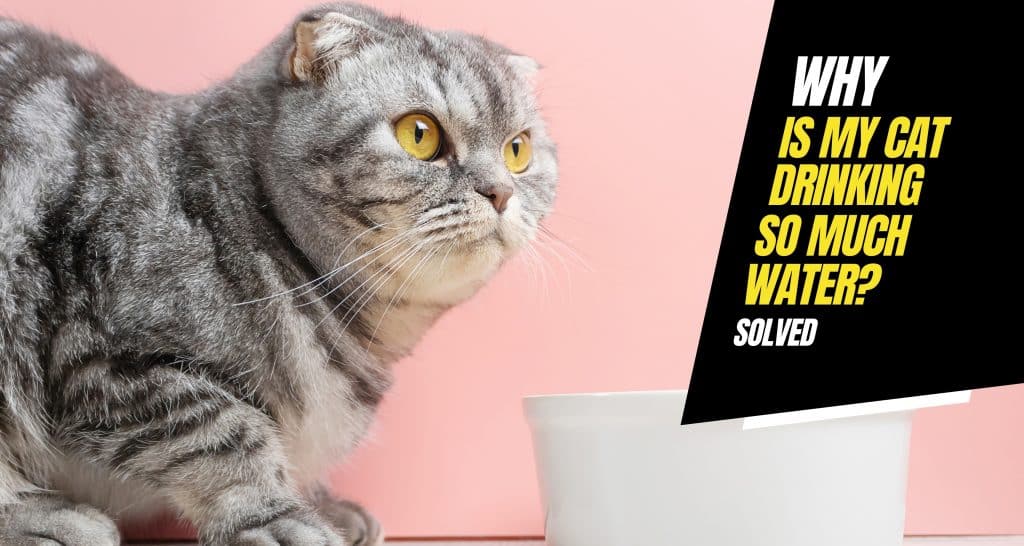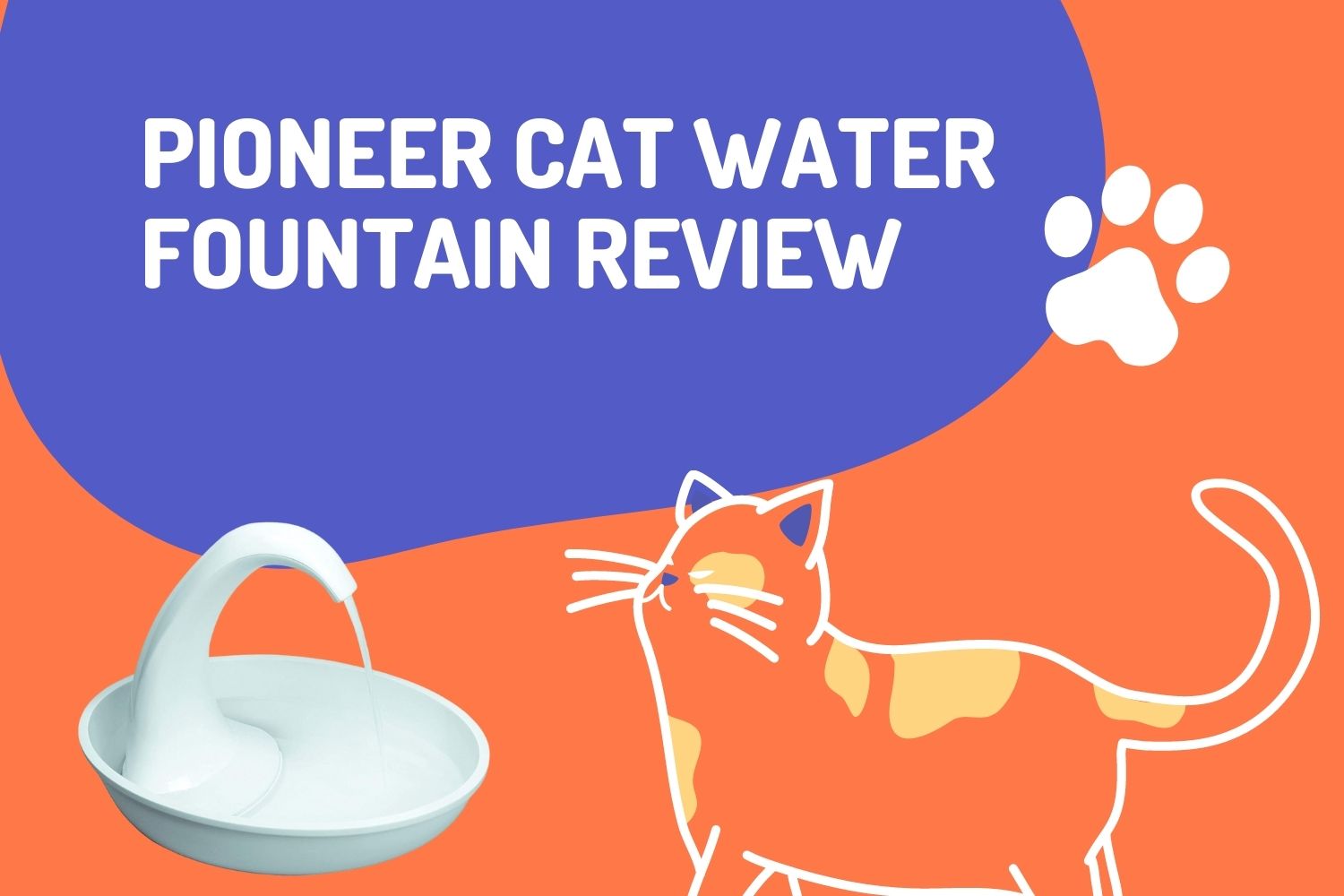
Cats are very anti-water. Not to say that cats will deliberately keep themselves thirsty. A cat will happily drink enough water to sustain itself for hours. But they will not go out of their way to drink water unnecessarily.
Does your cat drinking a lot of water suddenly?
If your cat is drinking a little too much water and your bowls are running dry, this is a clear indication of something amiss with your cat’s health. Let’s find out what the problem is and how we can solve it.
Recently we listed the 10 best spill proof cat water bowls which will help you keep your feline hydrated.
Why is My Cat Drinking Too Much Water?
Occasionally, after a few hours of heavy playing and running, your cat will gulp down a fair few ounces of water to quench its thirst.
However, you won’t find it doing so out of the blue. If it drinks water excessively, it may be due to a health reason. However, this single symptom of drinking too much water is not enough to indicate such a severe problem.
Ask yourself whether the amount of water your cat is drinking is even alarming.
How Much Water Should Cats Drink?
The amount of water a cat drinks depends on its weight.
For example, if you have a kitten weighing in at 1.4 kg, it’ll want to drink about 60-70ml of water. Keep in mind that the kitten may also get its share of hydration through wet food.
As your cat grows older, it will begin drinking more water. The average amount of water for a cat weighing 4 kg is 200ml. That equals 0.8 cups. Measuring how much water you put in each bowl helps keep a count of how much your cat drinks. If your cat finishes its bowl, has wet food on top, and remains thirsty, that counts as a problem.
Why Would a Cat Drink Too Much Water?
Increased thirst and increased drinking is a symptom of a range of health issues, including:
- Liver disease
- Hyperthyroidism
- UTI (urinary tract disease)
- Kidney dysfunction
- Diabetes
- Loss of water after vomiting or diarrhea
The last reason is understandable. But, if your cat is suffering from any of the problems, it may also experience other symptoms, such as:
- Lethargy
- Lack of interest
- Excessive sleeping
- Jerky movement
- Diarrhea
- Problems urinating
- Incontinence
- Loss of interest in food
But what if you didn’t notice your cat’s symptoms? In such cases, observing your cat for 24 hours is crucial. Allow your cat to have access to fresh, clean water. But give them high-quality wet food alongside.
Also, think back to when you think their increased drinking started? Changes in surroundings, food, and even the litter they use can affect your cat’s behavior. And keep in mind, most cats are great at covering up when they’re feeling unwell.
If your cat exhibits increased drinking, this shows that they’re not well.
How to Treat My Cat’s Drinking Habits?
Before getting to the worst conclusion, look around to see whether something has changed in their surroundings.
Has your cat preferred their dry food more than wet food? Is your house too warm? Is it getting very hot due to weather changes?
Weather and the environment can significantly impact your cat’s health and behavior. If your cat is not displaying any concerning behavior but continues to drink water, that may be why. In this case, you’ll want to make sure they always have access to fresh, clean water.
You’ll also want to bring this up on your cat’s next vet visit. Mark how long your cat has been drinking water excessively, and keep an eye on their health. More often, increased thirst only marks the start of the health issue. If your cat begins to show symptoms, take them to the emergency vet right away.
Your vet will likely take a few tests, including a blood and urine sample, to check whether there’s anything amiss. If a reason is discovered, they will recommend getting additional tests and will put your cat on a special diet.
If your cat is aggressive about drinking water, you’ll want to ask how to keep the water bowls away and your cat’s temper at bay.
How to Manage Your Cat’s Drinking Habits?
Unusual drinking habits among cats stem from unusual sources of water.
For example, your cat may not even touch their water bowls if they always have access to dripping taps or half-filled tubs of water. Start their training early if you have a younger cat who can be taught to drink from specific sources.
Here are some tips you can follow:
Keep Water Bowls in Every Room
Having water in every room will allow your cat to establish boundaries when it comes to drinking water. It will also give them a center point to go to whenever they’re thirsty.
Having only a couple of bowls in your home not only diminishes your cat’s hydration levels but also fails to remind your cat that they need to drink water. Your cat will forget to drink water if there’s no good source around it.
Consider the Bowl Material
Do you know that strangely rancid taste you get from a plastic cup? Now imagine your cat drinking from that same cup all the time.
Cats are fastidious about their water sources. They like clean, healthy fresh water from a source that has no added smells or tastes. For that, you need a stainless steel bowl or a ceramic bowl. Remember, when in doubt, always go with ceramic or glass.
Add a Water Fountain
This is especially useful if your cat is an outdoor cat.
If you notice your cat leaning more toward drinking from the taps than the bowls, having a fountain will solve all your problems. Water fountains for pets use a filter and a pump to keep the water flowing. This maintains the water fresh taste that cats like.
Water fountains are also low-maintenance. You can put it in the dishwasher or run it through hot water to clean it. In general, water fountains are a dream come true for cats and cat owners.
Use Flavor to Make Your Cat Love Water
Let’s say your cat is the complete opposite of a water-loving cat. Keeping such cats hydrated is the biggest challenge.
One great tip that almost always works is to use tuna water or bone broth to flavor the water. Add one part broth to one part water. As your cat continues to drink water, lessen the bone broth from the water source until your cat learns to drink water regularly.
Always Associate Water with Positive Reinforcements
If you have a younger cat, this is a perfect opportunity.
Use this time to make your cat more used to being around water. Cats aren’t instinctually averse to water. They dislike it because they don’t like the texture of something they cannot control.
Giving your cat water and allowing them to play with water while using treats and positive words will allow them to associate it with a positive moment, thus eliminating the need to stay away from it.
I recently published guides to address two more problems kittens not drinking water & can cats drink Gatorade that might help you to deal with the common issues of felines.
Conclusion
In most cases, it is excessive dehydration rather than excessive thirst that’s more common in cats. Either way, if your cat shows strange behavior around water, it always helps to get a professional opinion.
As a cat parent, you must trust your instincts and take the right step before things get serious. If one vet’s diagnosis does not satisfy, get another vet’s opinion. It doesn’t hurt to double-check. And always keep an eye on your cat’s health. You’ll want to know sooner if your cat is not feeling healthy.
This way, you and your cat will book remain happy and secure.






